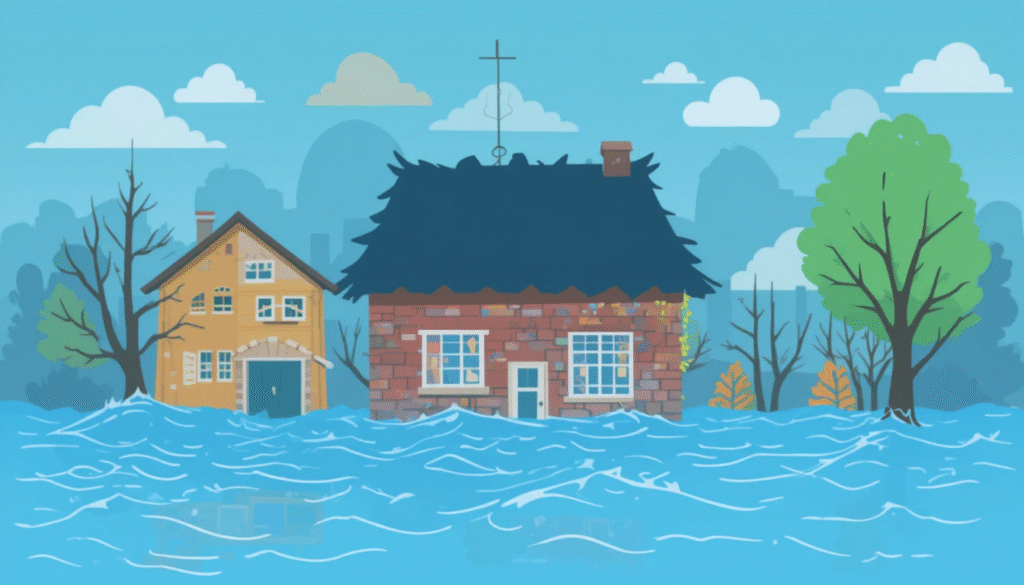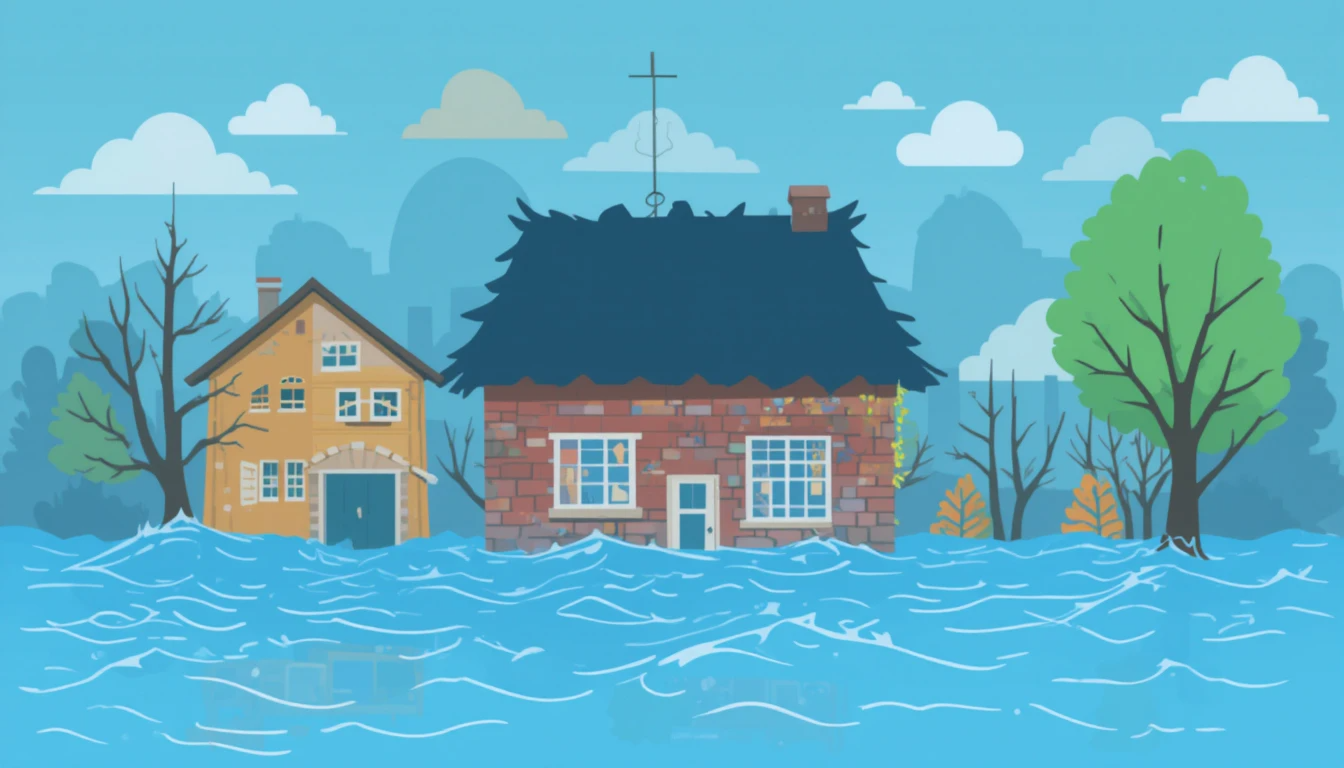Introduction
Flooding is the most common and costly natural disaster in the U.S., yet only 15% of homeowners have flood insurance—leaving millions vulnerable to financial ruin. In 2025, climate change has intensified flood risks, with 40% of flood claims now coming from areas outside FEMA’s high-risk zones 26.
This 5,000-word guide answers critical questions:
- Who really needs flood insurance in 2025?
- How FEMA’s Risk Rating 2.0 affects premiums
- Hidden risks in “low-risk” zones
- Cost-saving strategies (from elevation discounts to private market options)
Backed by 2025 flood maps, claims data, and expert analysis, this guide will help you decide whether flood insurance is a smart investment—or an unnecessary expense.

2025 Flood Risk: Key Trends You Can’t Ignore
1. Climate Change Is Expanding Flood Zones
- Hurricane Helene (2024) caused $78.7B in damages, with 75% of losses uninsured in inland areas like Asheville, NC 2.
- FEMA’s flood maps are outdated:
- 30M properties outside high-risk zones face significant flood threats 4.
- Maps ignore rainfall flooding (the #1 cause of urban flood claims) 8.
2. Rising Costs of Flood Damage
| Type of Damage | Average Cost |
|---|---|
| 1 inch of water | $25,000 |
| 12 inches of water | $72,000 |
| Total home destruction | $250,000+ |
| Source: NFIP 2025 claims data 16 |
3. The Insurance Gap
- FEMA grants average just $5,000—far below repair costs 2.
- 99% of U.S. counties have experienced flooding since 1996 6.
Who Needs Flood Insurance in 2025?
1. High-Risk Zones (SFHAs)
- Mandatory: Homes with federally backed mortgages in Special Flood Hazard Areas (SFHAs) must carry flood insurance 1.
- Typical premium: $786/year (NFIP average) 6.
2. Moderate-to-Low Risk Zones (Zone X)
- 20-40% of flood claims originate here 2.
- Optional but wise: Premiums as low as $400/year 6.
3. Renters & Business Owners
- NFIP covers contents: Up to $100K for renters, $500K for businesses 1.
4. Climate-Vulnerable Regions
- Florida, Louisiana, Texas: Rising sea levels and hurricanes increase risk 8.
- Inland states (e.g., Tennessee, Kentucky): Flash floods from heavy rainfall 2.
FEMA’s Risk Rating 2.0: What Changed in 2025?
1. More Accurate Pricing
- Old system: Based on flood zones/elevation.
- New system (Risk Rating 2.0): Factors in:
- Distance to water sources
- Flood type (storm surge vs. rainfall)
- Rebuild costs 36.
2. Premium Impacts
- 23% of policies saw decreases (avg. $10/month).
- 77% saw increases (capped at 18% annually) 3.
3. Grandfathered Rates Phasing Out
- Older homes in revised flood zones must adopt new rates by 2027 3.
NFIP vs. Private Flood Insurance
| Feature | NFIP | Private Insurance |
|---|---|---|
| Max Coverage | $250K (home) / $100K (contents) | Up to $1M+ |
| Waiting Period | 30 days | As little as 10 days |
| Claims Process | Slow (avg. 30+ days) | Faster (e.g., 14 days) |
| Cost | Fixed by FEMA | Often 20-40% cheaper |
| Sources: FEMA, Kiplinger 2025 16 |
Best Private Insurers in 2025:
- Neptune Flood: Instant online quotes, $500K+ coverage.
- Aon Edge: Covers basements and living spaces.
5 Ways to Save on Flood Insurance
1. Elevate Your Home
- 6-foot elevation reduces premiums by 30-60% 6.
2. Choose a Higher Deductible
- $5K deductible vs. $1K saves $200+/year 6.
3. Bundle with Home Insurance
- Some insurers (e.g., Allstate) offer 10% discounts 6.
4. Opt for Private Insurance
- Cheaper for low-risk homes (e.g., $350/year vs. NFIP’s $786) 2.
5. Leverage Community Discounts
- Towns with flood mitigation programs qualify for CRS discounts (up to 45% off) 1.
Red Flags: When to Avoid Flood Insurance
**1. You’re in a Very Low-Risk Area
- Check FEMA’s Flood Map Service Center for updated 2025 zones 1.
2. You Can Self-Insure
- If you have $250K+ in liquid savings, skipping insurance may be viable 6.
3. Your Home Has Flood Defenses
- Levees, floodwalls, or elevated foundations may negate need 4.
Step-by-Step Buying Guide
- Check Your Flood Risk: Use FEMA’s Flood Map Service Center 1.
- Compare Quotes: NFIP vs. private insurers (e.g., Neptune, Aon Edge).
- Ask About Discounts: Elevation, bundling, community ratings.
- Review Exclusions: Basements, temporary housing, landscaping.
- Purchase Early: 30-day waiting period for NFIP policies 1.
Conclusion: Your 2025 Flood Insurance Checklist
✅ High-risk zone? NFIP is mandatory—shop for private options if limits are too low.
✅ Moderate-risk? Consider private insurance for better rates.
✅ Low-risk? Weigh costs vs. potential damage (e.g., $25K/inch of water).
Final Tip: Re-evaluate annually—flood risks and insurance options evolve.
Next Steps:
- Get a free FEMA flood risk report.
- Compare 3+ quotes using our interactive tool.
- Download the 2025 Flood Prep Guide.
